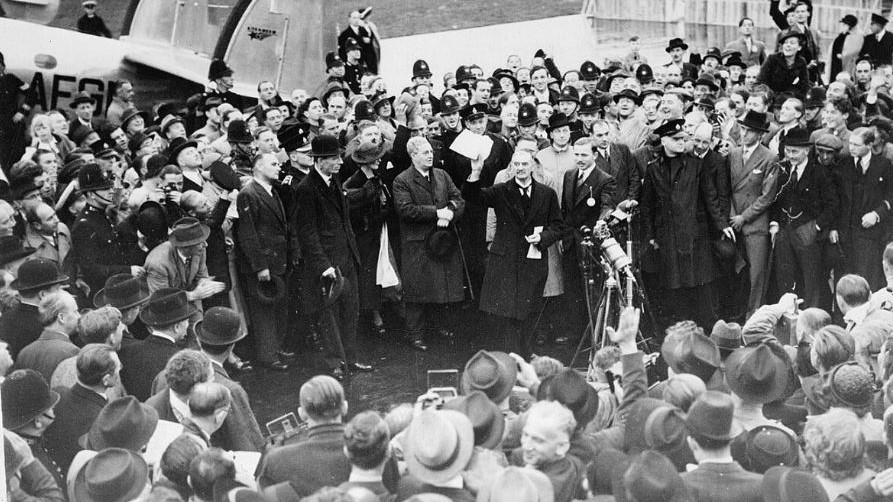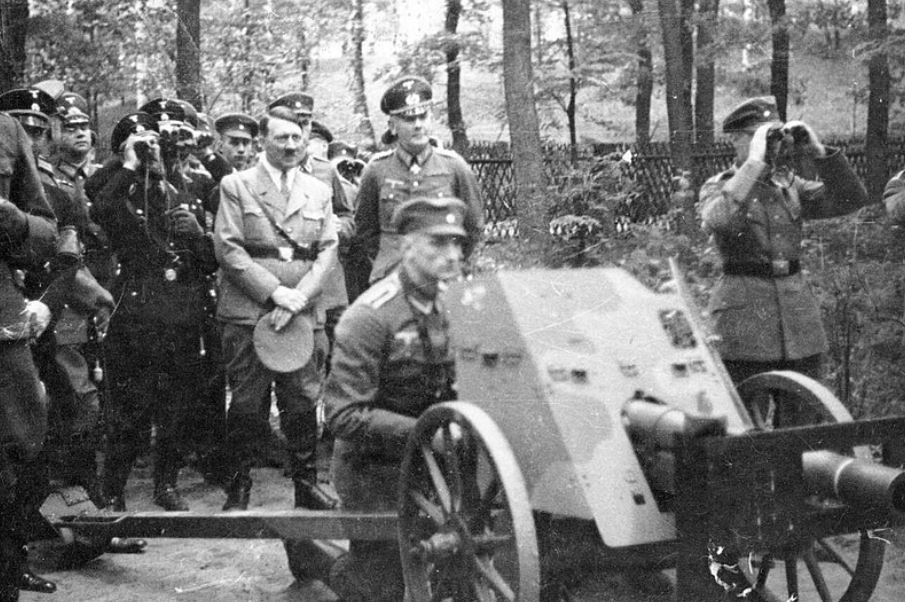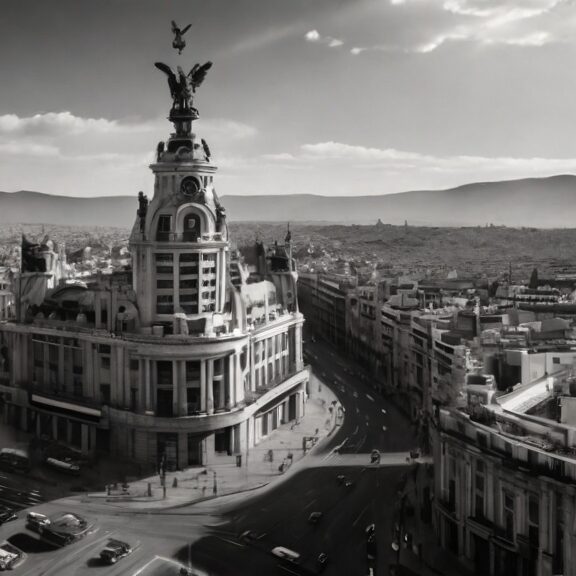What were the Best Tanks of World War 2? Tanks played pivotal roles, each with unique strengths and weaknesses.
From the deserts of North Africa to the frozen landscapes of Eastern Europe, tanks became the vanguards of military might, influencing the ebb and flow of warfare.
The quest for the perfect tank during World War 2 was not merely an arms race; it was a relentless pursuit to balance firepower, mobility, and protection.
Join us me I explore the iconic tanks of World War 2. From the M4 Sherman to the formidable Tiger II, we unravel the stories of these revolutionary tanks.
- The Best German Tanks of World War 2
- The Best Soviet Union Tanks of World War 2
- The Best American Tanks from World War 2
- The Best British Tanks of World War 2
- How did the German tanks of World War 2 compare with the Allies?
- What were the worst tanks of Word War 2?
- What were the largest tank battles of World War 2?
- A Reflection on Tank Design Evolution and Legacy
- Further Reading
The Best German Tanks of World War 2
| Tank Model | Key Features | Role | Strengths | Weaknesses |
| Panzerkampfwagen VI Tiger I | 88mm main gun, thick armor | Heavy tank | Powerful firepower, good armor protection | Slow speed, complex mechanics, expensive to produce |
| Panzerkampfwagen V Panther | 75mm main gun, sloped armor | Medium tank | Good firepower, good armor protection, good mobility | Thin armor compared to heavy tanks, complex mechanics |
| Panzerkampfwagen III | 50mm main gun, good armor | Medium tank | Good firepower, good armor protection, good mobility | Thin armor compared to heavy tanks, short-barreled gun |
| Panzerkampfwagen IV | 75mm main gun, good armor | Medium tank | Good firepower, good armor protection, good mobility | Thin armor compared to heavy tanks |
| Sturmgeschütz III | 75mm main gun, low profile | Self-propelled gun | Good firepower, good armor protection, low profile | Slow speed, no turret |
1. Panzerkampfwagen VI Tiger I

The Tiger I was one of Tanks of World War 2 that struck fear into the hearts of Allied forces.
Renowned for its fearsome reputation, the Tiger I was a heavy tank armed with the formidable 88mm gun. This boasted unparalleled firepower during its time.
The Tiger I was produced in limited numbers, and it was only used in a few battles. However, it had a significant impact on the war, including the Battle of Leningrad, Battle of Kursk and Battle of Normandy.
Its thick frontal armor became a near-impenetrable fortress, turning it into a formidable opponent on the battlefield.
Yet, with its prowess came limitations. The Tiger I’s sheer weight and mechanical complexity made it prone to mechanical issues, impacting its operational efficiency.
Despite its undeniable impact on the war, the Tiger I faced challenges in terms of production costs and resource allocation. This highlights the delicate balance between technological superiority and practical feasibility.
2. Panzerkampfwagen V Panther
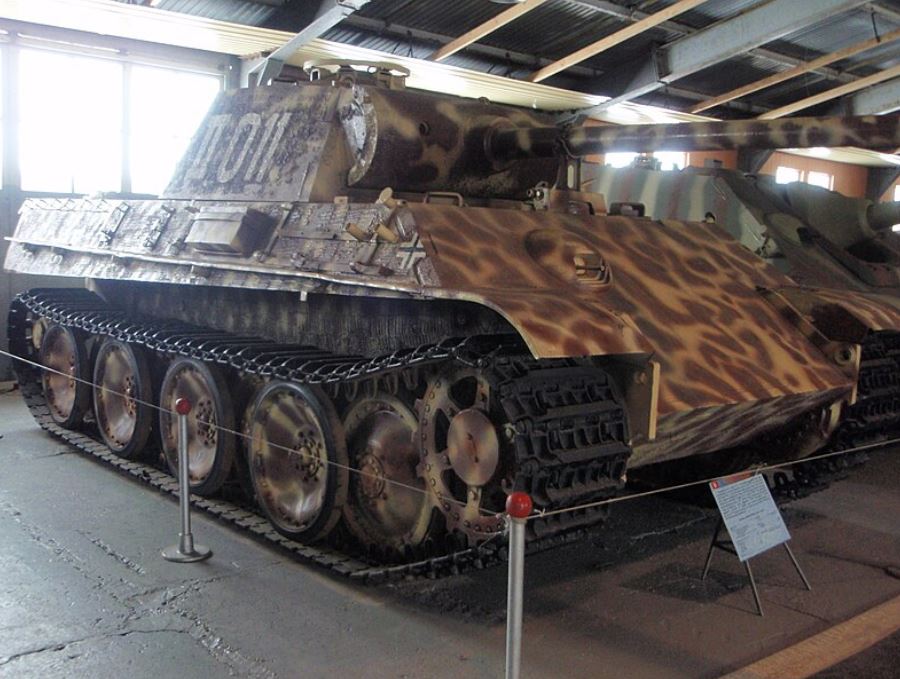
In the realm of balanced tank design, the Panther stood as a testament to German engineering.
Featuring a powerful 75mm gun and improved armor protection, the Panther bridged the gap between the Panzer IV and the Tiger I. Its agility and firepower made it a formidable adversary on the battlefield.
The Panther’s balanced design allowed for effective maneuverability without compromising on firepower.
Its introduction addressed the need for a medium tank. It had enhanced capabilities, influencing the course of tank development during the latter stages of World War II.
3. Panzerkampfwagen III

The Panzerkampfwagen III (PzKpfw III or Panzer III) was a medium tank, first developed in 1937. It formed the backbone of Germany’s panzer divisions during the early years of the war.
With a balance of armor, armament, and maneuverability, the Panzer III saw widespread use during the invasions of Poland, France, the Low Countries, North Africa, and the Eastern Front.
Reliable and adaptable, later variants were up-gunned as stronger Allied tanks were encountered.
However, by 1943 it was being replaced as the predominant German medium tank by the more capable Panther and ultimately phased out of frontline duty.
Still, the Panzer III provided valuable wartime service across multiple theaters.
4. Panzerkampfwagen IV
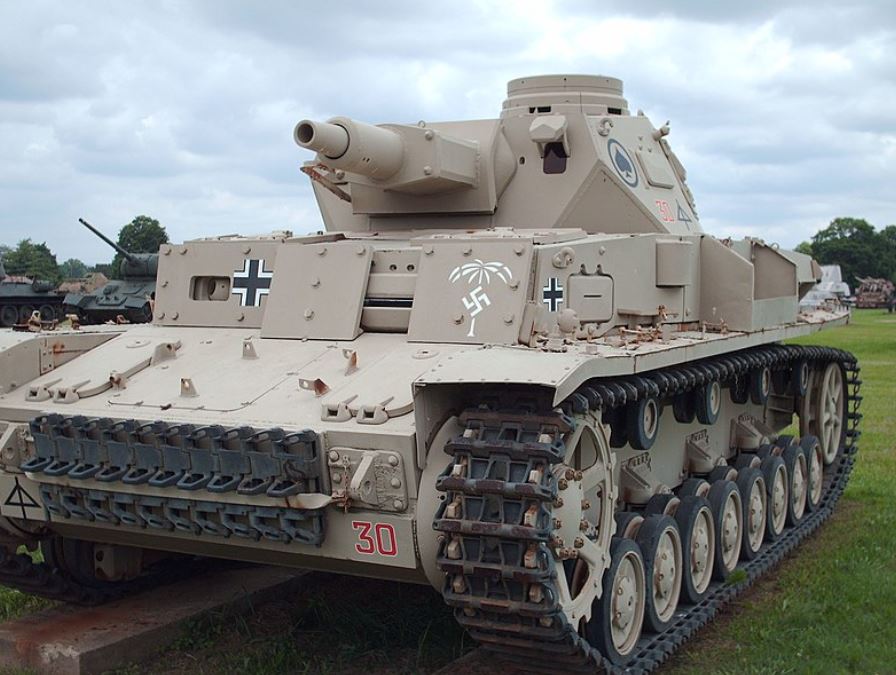
At the heart of Germany’s armored might, the Panzer IV emerged as a stalwart companion throughout World War II. The Panzer IV was armed with a 75mm main gun, which was capable of penetrating the armor of most Allied tanks.
Its versatility, reliability, and adaptability marked it as a linchpin in the German tank arsenal. The Panzer IV seamlessly adapted to various roles, from infantry support to anti-tank warfare, showcasing its resilience on the ever-evolving battlefield.
The Panzer IV’s significance lay in its continuous upgrades and variants. The relentless pursuit of improvement led to enhanced firepower, reinforced armor, and improved mobility.
This relentless evolution kept the Panzer IV not just relevant but often ahead of its adversaries. It proved its mettle from the early Blitzkrieg campaigns to the later stages of the war.
5. Sturmgeschütz III
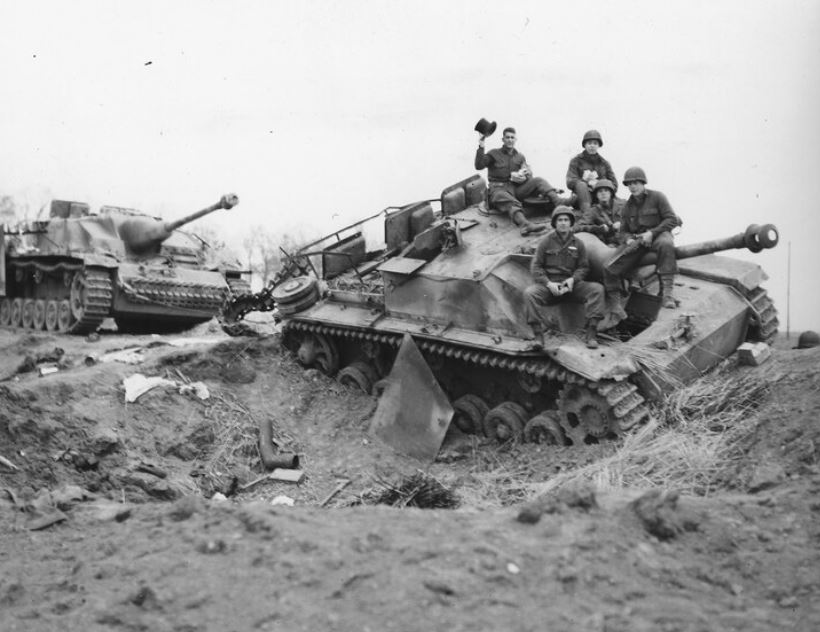
The German-built Sturmgeschütz III (StuG III) assault gun was one of the most commonly used armored fighting vehicles by the Nazis in World War II.
Built on a Panzer III chassis but with a fixed, low-profile casemate instead of a turret, it was intended to provide support to infantry units.
Equipped with a powerful 75mm gun, the StuG III gained a reputation for its heavy frontal armor. It also had strong defensive firepower, mechanical reliability, and potent anti-tank capabilities – critical during engagements from Stalingrad to Berlin.
Though not a full tank replacement, it excelled at defensive roles.
Inexpensive to make and maintain, the StuG III’s versatility and battlefield prowess made it a vital component of the German war machine.
By 1943, it was Nazi Germany’s most numerous armored vehicle.
The Best Soviet Union Tanks of World War 2
| Tank Model | Key Features | Role | Strengths | Weaknesses |
| T-34 | Sloped armor, wide tracks, Christie suspension | Medium tank | Good mobility, good armor protection, good firepower | Thin armor compared to heavy tanks, unreliable transmission |
| KV-1 | Thick armor, powerful main gun | Heavy tank | Good armor protection, good firepower | Slow speed, poor mobility |
| IS-2 | 122mm main gun, thick armor | Heavy tank | Powerful firepower, good armor protection | Slow speed, poor mobility |
| SU-100 | 100mm main gun, low profile | Tank destroyer | Powerful firepower, good armor protection, low profile | Slow speed, no turret |
| SU-152 | 152mm main gun, low profile | Self-propelled gun | Very powerful firepower, good armor protection, low profile | Slow speed, no turret |
1. T-34: The Soviet Steel Behemoth
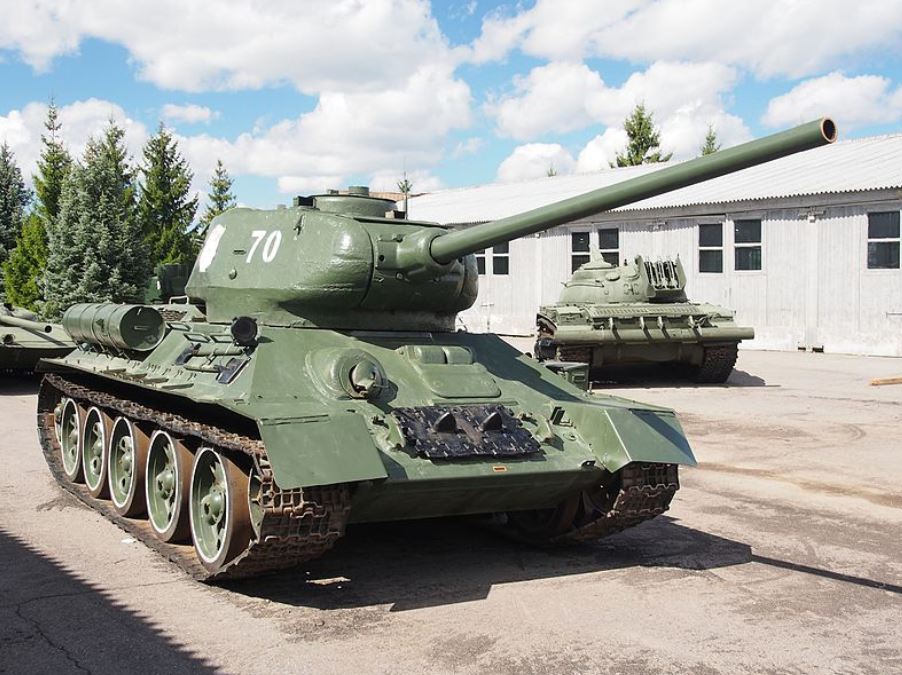
The T-34 was a symbol of Soviet ingenuity and resilience.
This medium tank stood out with its revolutionary sloped armor, providing enhanced protection against enemy fire. Armed with a powerful 85mm gun and blessed with exceptional cross-country mobility, the T-34 became a linchpin in the Soviet Union’s armored forces.
The T-34’s impact on Soviet victories was profound. Its combination of firepower, maneuverability, and armor played a pivotal role in turning the tide on the Eastern Front.
The sloped armor design not only increased survivability but also became a blueprint for future tank development worldwide.
The T-34’s versatility allowed it to excel in offensive and defensive roles, making it a cornerstone of Soviet armored warfare.
The T-34’s claim to the title of the best tank in World War II rests on a delicate equilibrium of firepower, armor protection, and mobility. This harmonious blend addressed the challenges of the Eastern Front’s dynamic and unforgiving terrain.
2. KV-1: The Heavyweight Contender
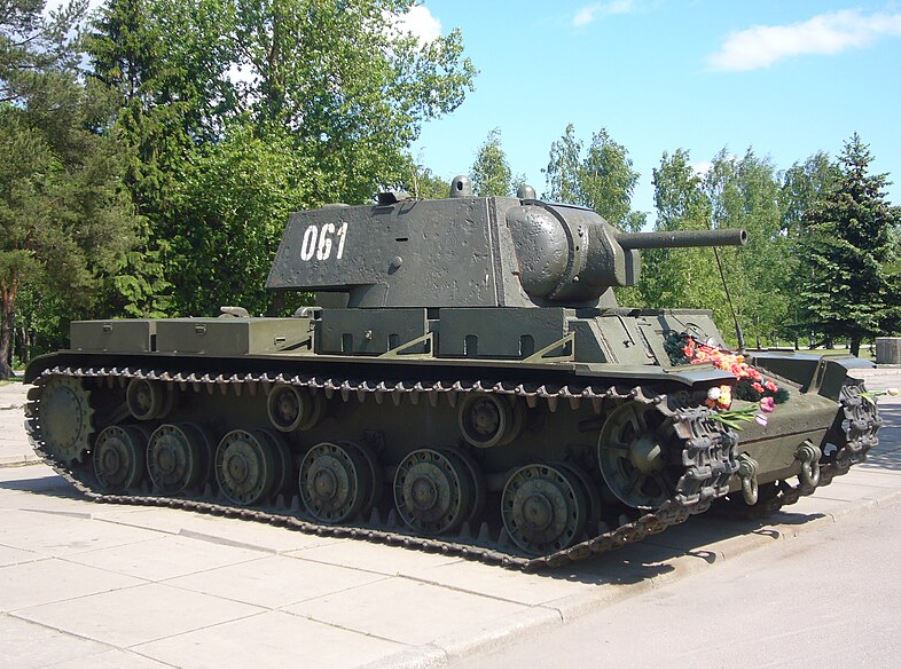
In the early stages of the war, the KV-1 emerged as a formidable opponent for German tanks.
Boasting heavy armor and a powerful 76mm gun, the KV-1 could withstand enemy fire while delivering devastating blows in return.
Its imposing presence on the battlefield disrupted German advances and showcased the Soviet Union’s commitment to producing tanks that could rival the best of the enemy.
The KV-1’s significance waned as the war progressed and German tank technology evolved. Its early contributions demonstrated the Soviet Union’s dedication to crafting heavy tanks capable of challenging the status quo.
3. The Iosif Stalin 2 (IS-2)

The Iosif Stalin 2 (IS-2) was a heavy tank developed by the Soviet Union to counter Germany’s formidable Panther and Tiger tanks.
Weighing 46 tons, the IS-2 sported exceptionally thick frontal armor and was armed with a powerful 122mm gun.
First seeing combat in early 1944, it outgunned anything the Germans could field at the time. The IS-2 struck fear into German tank crews and infantry alike with its sheer size and firepower.
However, it also gained a reputation for being clumsy and mechanically unreliable.
Still, with around 3,800 IS-2 tanks manufactured during the war, it provided a major boost to Soviet efforts from 1944-1945.
The IS-2’s heavy armor and massive 122mm gun made it a critical breakthrough tank to smash German defenses during the final Soviet drives into Eastern Europe and Germany.
4. SU-100
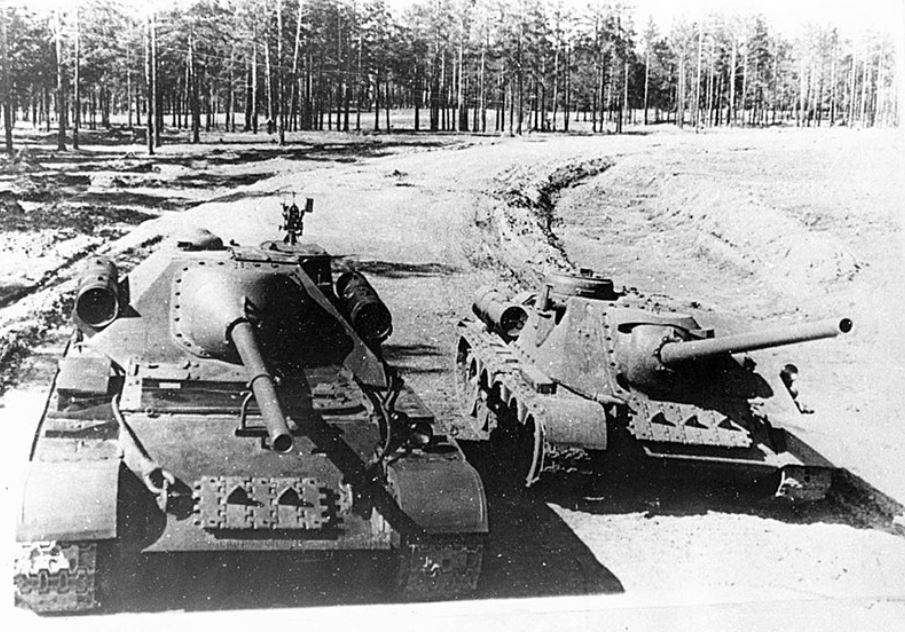
The SU-100 was a Soviet self-propelled gun developed in 1944 that would gain fame as a tank destroyer.
The SU-100 was built on a modified T-34 chassis. It was equipped with a powerful 100mm anti-tank gun that was capable of penetrating the armor of German Panther and Tiger tanks.
Though boxy and ungainly in appearance, the SU-100 made up for it with superb firepower. It also had reasonable mobility and a low silhouette.
It excelled in ambush tactics, inflicting heavy losses against Axis armor at long range.
By 1945, the SU-100 had earned a reputation as one of the best tank hunters of the war.
The SU-100 provided a much-needed boost to Soviet anti-tank capabilities during the later years of WWII.
5. SU-152
The SU-152 was a Soviet self-propelled heavy howitzer built on a modified KV-1S heavy tank chassis.
Nicknamed “Zveroboy” (“Beast Killer”), it was armed with a massive 152mm gun intended to destroy enemy fortifications.
First deployed in significant numbers during the Battle of Kursk in 1943, the SU-152 proved it could also destroy any German tank with a single round.
However, it had limited ammunition capacity and poor accuracy at distance.
Slow and mechanically unreliable, the SU-152 was most effective in ambush and defensive roles.
Within months, the SU-152 established itself as one of the most feared assault guns. It is remembered as an infantry support weapon par excellence.
The Best American Tanks from World War 2
| Tank Model | Key Features | Role | Strengths | Weaknesses |
| M4 Sherman | 75mm or 76mm main gun, good mobility | Medium tank | Good firepower, good mobility, reliable | Thin armor compared to heavy tanks |
| M26 Pershing | 90mm main gun, good armor | Medium tank | Powerful firepower, good armor protection, good mobility | Late to enter service |
| M3 Lee/Grant | 75mm main gun in sponson mount, good armor | Medium tank | Good firepower, good armor protection | Slow speed, high profile |
| M4A3E2 Sherman Jumbo | 75mm main gun, thick armor | Assault tank | Good armor protection | Slow speed, high profile |
| M18 Hellcat | 76mm main gun, very fast | Tank destroyer | Powerful firepower, very fast | Thin armor, open-topped |
1. M4 Sherman

The M4 Sherman, an iconic symbol of American industrial prowess, played a pivotal role as the backbone of Allied armored forces.
Mass-produced, reliable, and adaptable to various roles, the Sherman became the workhorse of the Western Front.
Mass production was a defining feature of the M4 Sherman. Its standardized design, coupled with efficient manufacturing processes, allowed the United States to produce the tank in large quantities.
The Sherman’s reliability and adaptability made it an invaluable asset, serving in roles ranging from infantry support to reconnaissance, and its varied variants addressed specific battlefield needs.
The Sherman gained a reputation for being outmatched by heavier German tanks like the Panther and Tiger. This led to the Sherman being dubbed a “death trap” or “Ronson” by some due to catastrophic fires caused by hits to its gasoline engines or ammunition storage.
Despite flaws, the M4’s ubiquity led General Patton to declare it “the greatest battle implement ever devised.”
2. M26 Pershing

The M26 Pershing heavy tank entered the battlefield too late to bolster the Allied effort.
After earlier disastrous clashes against superior German armor, tank crews yearned for a powerful vehicle to rival vaunted tanks like the Panther and Tiger.
When the first Pershings deployed to Europe in early 1945 though, the war was nearing its end. Seeing limited combat, the M26 struggled with reliability issues. However it proved a roughly even match against German counterparts, restoring some American confidence.
However, its late debut and modest numbers during WWII meant the Pershing received a somewhat mixed reception. While welcomed, some criticized it as an overdue solution that arrived too late to gain much repute in a nearly over war.
3. M3 Lee/Grant
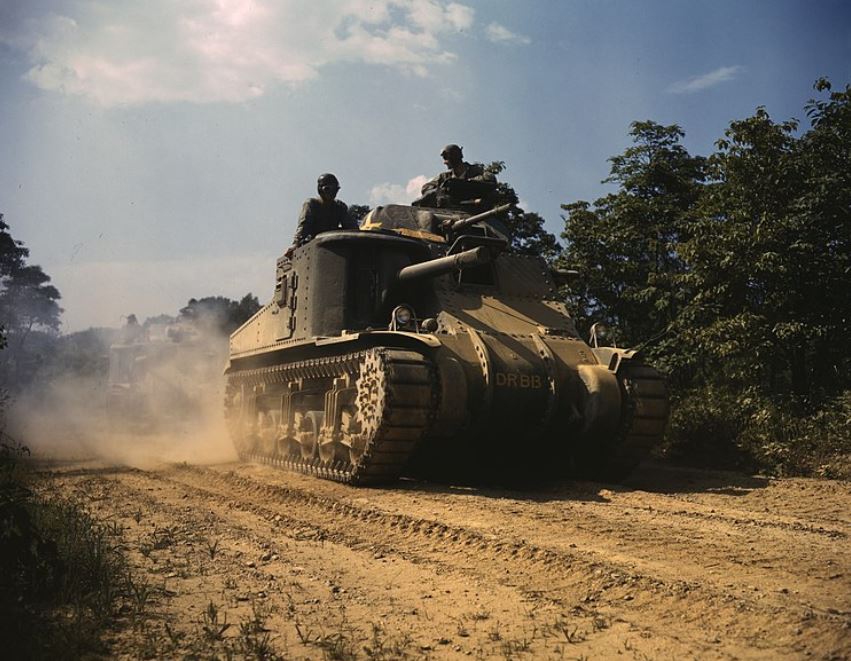
The American-designed M3 was an early-war medium tank intended to counter German armor superiority.
Characterized by a high-profile hull mounting a 75mm gun coupled with a small turret wielding a 37mm gun, this odd appearance earned it the nickname “Kangaroo tank”.
Rushed into production in 1941 to equip British forces in North Africa, the Lee/Grant (as the British designated it) arrived amidst Axis victories. However, its firepower quickly proved capable of taking on opposing armor.
It was however hampered by inadequately trained crews, and mechanical issues in harsh desert environments.
4. M4A3E2 Sherman Jumbo
The M4A3E2 “Jumbo” Sherman was an up-armored variant of the standard M4 Sherman tank. It was engineered by the Allies as a direct counter to the German Panther and Tiger tanks.
Fielded in mid-1944, what set the Jumbo apart was its enormously thick front armor which exceeded even the Panther in protection. This made it largely impervious to enemy anti-tank fire.
However, mobility was reduced.
Still, for infantry support the Jumbo proved very valuable. At last offering frightened Allied tank crews a Sherman version that could withstand German 75mm and 88mm guns with better success.
Praised for boosting crew confidence immensely and often leading assaults, the M4A3E2 earned a degree of fame as the best-armored Sherman which could finally match rival threats from Panzers.
5. M18 Hellcat

The lightning-fast M18 Hellcat tank destroyer was developed by the United States in 1943 to counter German armor in Europe.
Armed with a 76mm gun on an innovative lightweight chassis capable of speeds in excess of 50 mph, the Hellcat excelled at hitting and running battlefield ambushes.
Hellcats would rapidly outflank enemy tanks, unleash a barrage of fire, then exit before return shots landed – earning reputations for being daredevil vehicles.
Over 2,500 were produced by 1945.
While lacking in armor protection compared to tanks, the extremely mobile Hellcat’s speed and gun proved lethal and doctrinally shifted tank destroyer tactics from defensive to aggressive.
The M18 operated in tandem with heavier vehicles by enabling daring, fleet-footed flanking maneuvers that wreaked havoc against Axis tanks across France and Germany.
The Best British Tanks of World War 2
| Tank Model | Key Features | Role | Strengths | Weaknesses |
| Churchill | Thick armor, good off-road performance | Infantry tank | Good armor protection, good off-road performance | Slow speed, high profile |
| Cromwell | 75mm main gun, good speed and maneuverability | Cruiser tank | Good firepower, good speed and maneuverability | Thin armor |
| Sherman Firefly | 76mm main gun, based on the American M4 Sherman | Tank destroyer | Powerful firepower, good mobility | Thin armor |
| Comet | 77mm main gun, good speed and maneuverability | Cruiser tank | Good firepower, good speed and maneuverability | Thin armor |
1. Churchill Tank

The British-produced Churchill infantry tank saw service throughout the Second World War from its origins at the disastrous Dieppe raid in 1942 to final battles in Germany in 1945.
Easily recognized by its box-shaped hull and thick armor, the heavy Churchill was designed primarily to support soldiers on the battlefield rather than engage enemy tanks.
Slow and mechanically unreliable, it earned a reputation for getting bogged down while crossing difficult terrain.
However, crews appreciated the Churchill’s protection and versatile armament options, allowing it to take on both infantry and some tank duties.
Resilient to damage and praised for the ability to repair, the Churchill’s durable qualities and ever-growing firepower kept it in action to the war’s end despite its shortcomings.
2. Cromwell
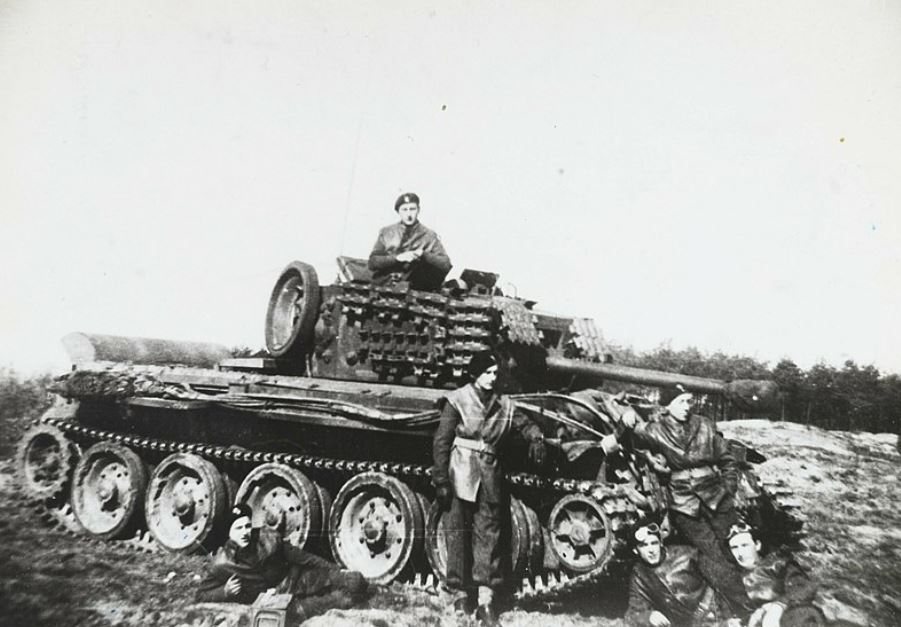
The British Cromwell entered service in 1944 as one of the fastest cruiser tanks operated by Allied forces.
Powered by the Rolls Royce Meteor V12 petrol engine, it could travel at an impressive 40 mph – swift for the era. This improved mobility intended to support bold armored advances finally gave British tank crews parity with their German counterparts.
Armed only with a 75mm gun, the Cromwell lacked the firepower and armor of late-war German heavy tanks, but proved effective for reconnaissance duties thanks to speed and low profiles that made enemy detection difficult.
While not able to fight Tigers head-on, the Cromwell brought elusive speed, reliability and range back to British armored formations amidst Allied drives into the Reich’s frontiers.
3. The Sherman Firefly
The Sherman Firefly was a World War II Allied tank modification that saw widespread service.
Standard American-made Sherman tanks were converted by the British into the Firefly variant by installing a more powerful 17-pounder anti-tank gun into the turret, allowing it to take on heavy German tanks.
Though the gun had performance issues, it greatly boosted Shermans’ potency by enabling them to penetrate Tiger and Panther frontal turret armor.
Over 2,000 were produced in time for D-Day landings and the crucial Allied drives into Germany.
The Firefly was highly valued by crews within tank squadrons as the essential armor-defeating asset. The Firefly gained recognition as the stopgap Sherman variant that finally brought British and American armor up to par.
4. Comet
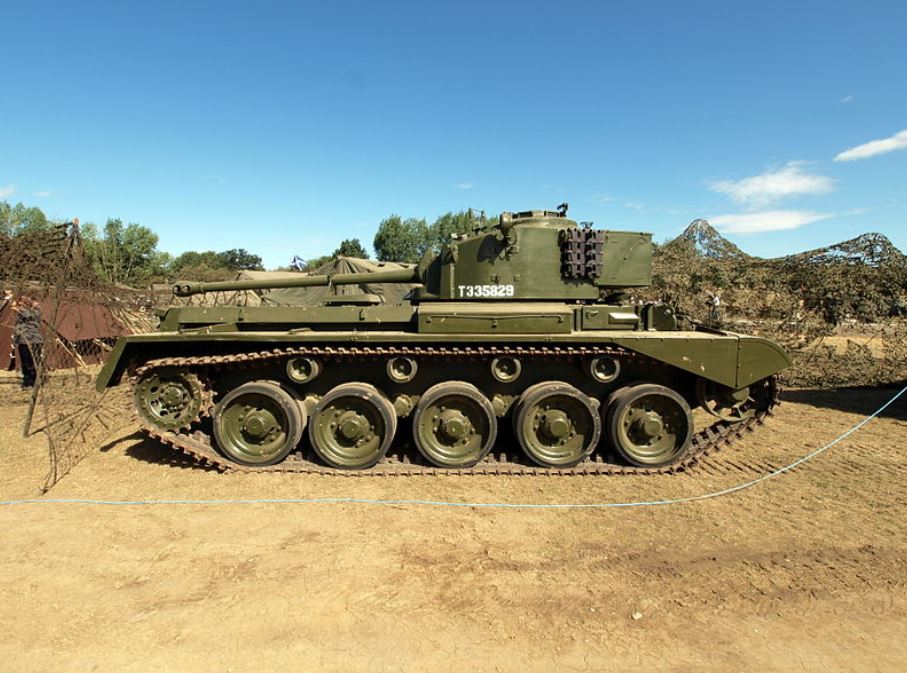
The A34 Comet tank entered British service late in World War II as an intended replacement for the Cromwell cruiser tank.
Developed to match improvements seen in late-war German armor like the Panther, the Comet had considerably thicker armor and a more powerful 77mm high velocity gun.
However, design changes resulted in only a limited number seeing combat by the time of Germany’s surrender in 1945.
So while featuring much-improved capabilities over earlier British cruiser tanks, the Comet never achieved the same wartime fame as other designs.
Still, in the final months of the war, Comet crews welcomed its blend of strong firepower and protection that could finally stand up to Panzers on equal terms. This cemented its reputation as Britain’s finest wartime tank that arrived just too late.
How did the German tanks of World War 2 compare with the Allies?
German tanks generally compared favorably to the tanks used by the Allies during World War II. Key differences include:
Armor: German tanks generally had thicker and better quality armor than Allied tanks. This was especially true of the heavier German tanks, such as the Tiger I and Tiger II. The sloped armor on many German tanks also helped to deflect enemy shells.
Guns: German tanks were also generally armed with more powerful guns than Allied tanks. The 88mm gun on the Tiger I and Tiger II tanks was one of the most powerful tank guns of the war. Even the smaller 75mm gun on the Panzer IV was more powerful than the guns on most Allied tanks.
Technology: German tanks were often more technologically advanced than Allied tanks. For example, German tanks were among the first to be equipped with features such as night vision devices, rangefinders, and radios.
Reliability: German tanks were often less reliable than Allied tanks. This was due to a number of factors, including the complexity of their designs and the poor quality of the materials used in their construction. As such, German tanks were more difficult to maintain and repair than Allied tanks.
Production: German tanks were more expensive and difficult to produce than Allied tanks. This was due to the complex designs and the high quality of the materials used in their construction. As a result, Germany was never able to produce enough tanks to meet the demands of the war.
Overall, German tanks were generally superior to Allied tanks in terms of armor, firepower, and technology. However, German tanks were also more expensive, difficult to produce, and less reliable.
It is important to note that there were some exceptions to these general trends. For example, the Soviet T-34 tank was a very effective tank that was comparable to the German Panzer IV in terms of armor and firepower.
What were the worst tanks of Word War 2?
Some of the worst tanks of World War II include:
- Bob Semple tank: This New Zealand-made tank was built on a tractor chassis and was armed with machine guns. It was slow, unreliable, and had very thin armor.
- T-26: This Soviet light tank was obsolete by the start of World War II. It was lightly armored and armed, and it was no match for German tanks.
- M3 Lee: This American medium tank was designed to provide infantry support. It had a high profile and a complex design, which made it unreliable and difficult to maintain.
- P-40: This Italian medium tank was underpowered and had thin armor. It was also very unreliable.
- Renault FT: This French light tank was one of the most successful tanks of World War I, but it was obsolete by the start of World War II. It was lightly armored and armed, and it was no match for German tanks.
- Universal Carrier: This British light tank was designed to transport troops and supplies. It was not intended for combat, but it was sometimes used in that role. It was lightly armored and armed, and it was no match for German tanks.
These tanks were all considered to be bad for a variety of reasons. Some were simply obsolete, while others were poorly designed or unreliable. Some were also underpowered or had thin armor. As a result, these tanks were often outmatched by enemy tanks and were not very effective in combat.
It is important to note that even the worst tanks of World War II could be effective in certain situations. For example, the Bob Semple tank was used to defend New Zealand against a possible Japanese invasion. While it was not a very good tank, it was still better than no tank at all.
What were the largest tank battles of World War 2?
The largest tank battles in World War II were all significant events in the war and played a major role in the outcome of the war.
Battle of Kursk (1943)
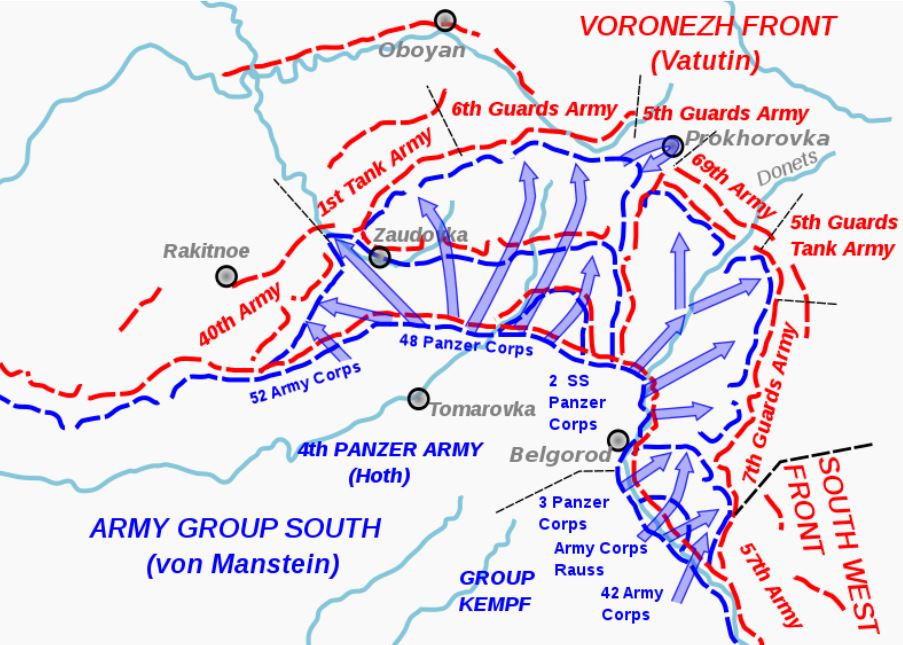
The Battle of Kursk was the largest tank battle in history, involving over 6,000 tanks. The battle took place in the Soviet Union and resulted in a Soviet victory. The battle was a turning point in the war on the Eastern Front and marked the beginning of the end of German dominance in the Soviet Union.
Battle of Prokhorovka (1943)
The Battle of Prokhorovka was a part of the Battle of Kursk and is often considered to be the largest tank battle of the war. Over 1,500 tanks were involved in the battle, which resulted in a Soviet victory.
Battle of Brody (1941)
The Battle of Brody was the largest tank battle of the early stages of the war. Over 3,000 tanks were involved in the battle, which resulted in a German victory. The battle was a major defeat for the Soviet Union and marked the beginning of the German invasion of the Soviet Union.
Battle of El Alamein (1942)
The Battle of El Alamein was a decisive battle in the North African campaign. Over 1,000 tanks were involved in the battle, which resulted in a British victory. The battle marked the beginning of the end of German dominance in North Africa and was a major turning point in the war in the Mediterranean.
Battle of Arracourt (1944)
The Battle of Arracourt was the largest tank battle on the Western Front. Over 1,000 tanks were involved in the battle, which resulted in an Allied victory. The battle marked the beginning of the Allied offensive in Europe and was a major step towards the eventual Allied victory in the war.
These tank battles were all significant events in World War II and played a major role in the outcome of the war. They were all characterized by large numbers of tanks involved, high casualties, and significant strategic importance.
A Reflection on Tank Design Evolution and Legacy
The journey through World War II tanks unveils an evolution in design philosophy, from the sheer numbers of the mass-produced M4 Sherman to the impregnable armor of the Tiger I.
As the war unfolded, lessons learned from both successes and setbacks contributed to the continuous refinement of tank design. The legacy of these iconic vehicles extends beyond the battlegrounds of yesteryear, influencing the principles that govern modern armored warfare.
In the wake of World War II, tank design continued to evolve, incorporating lessons from past conflicts and technological advancements. The enduring legacy of these steel behemoths lies not only in their impact on the battlefield but also in the indelible mark they left on military strategy, shaping the contours of conflict for generations to come. As we reflect on the best tanks of World War II, we recognize not only their historical significance but also their role as harbingers of change in the ever-evolving landscape of warfare.


